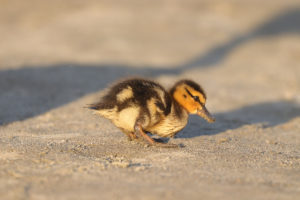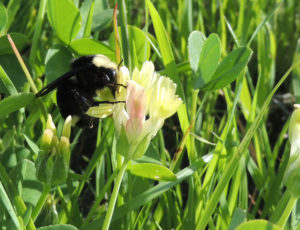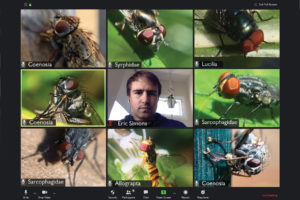For the third year in a row, San Francisco State University Professor Gretchen LeBuhn is helping thousands of people pitch in on a major research effort to count bees all across the country.
As part of the Great Sunflower Project, nearly 100,000 participants have signed up to plant sunflowers, count bees, and submit data online. Researchers use the data collected and submitted by citizen scientists across the United States and Canada to map pollinators and pollinator services to see what area bees are doing well and where they need help.
“Most [people] have heard that there is a crisis in bees,” said LeBuhn in an interview for yourgardenshow.com. “If you have a vegetable garden or if you have fruit trees, you need to have bees. If you want to have a productive garden…you have to have a healthy, diverse bee community in your backyard.”.
To attract bees, participants in LeBuhn’s project plant lemon queen sunflowers or other bee-attracting plants such as bee balm, cosmos, rosemary, tickseed, and purple coneflower in their home gardens. Project participants take just 15 minutes twice a month to observe and count bees that visit their flowers and then submit this data to the Great Sunflower Project. In just 30 minutes a month, they’re helping to save bee populations that have been unexpectedly declining for several decades.
So far, about 5,000 participants have submitted data to the Great Sunflower Project. This year, the organizers hope to increase that number with the Great Bee Count day, set for July 16.
Fred Bove, the project’s outreach director, said that focusing on a single day is intended to motivate all participants to take the next important step and actually submit their collected data.
“It would be really cool to have a whole group of people doing the same thing on the same day,” said Bove. Shortly after July 16, Bove will send information to project members about data collected and how many people participated.
“The goal of our program is education about pollinator service. It is most important that people become more aware of pollinator service in their community and aware of what bees do for us and how we can help preserve them,” said Bove.
Florence de Losada of San Rafael has been part of the project for the past three years. She says she enjoys watching bees come through her small garden, especially in the morning, and spending time outside with her daughter observing bees helps her to feel more connected with nature.
“As we all know, we are losing a lot of bees,” de Losada said. “I just wanted to be part of a very important project, because without the bees, we’d have a lot of problems with growing vegetables and flowers.”
De Losada’s organic garden includes lettuce, snap peas, beets, Swiss chard, tomatoes, garlic, and string beans, but she says that it’s the sunflowers and lavender that the bees keep coming back for.
She actually didn’t see any bees the first year she was trying to collect data for the project, but the number of bees visiting her garden has increased in the past two years.
De Losada was not alone in not seeing bees. “One thing that has surprised me is that about 20 percent of the gardens submitted data that [suggested they] weren’t seeing any bees in 15 minutes,” said LeBuhn. “That was higher than I expected.”
As a result, LeBuhn and other Sunflower Project staff are increasing their efforts to encourage gardeners to grow more and more flowering plants for the benefit of bees and other pollinators. “Doing some real conservation is going to make the Sunflower Project even more powerful,” said LeBuhn.
For more information or to find out how you can get involved with the Great Sunflower Project, visit greatsunflower.org.

.jpg)




